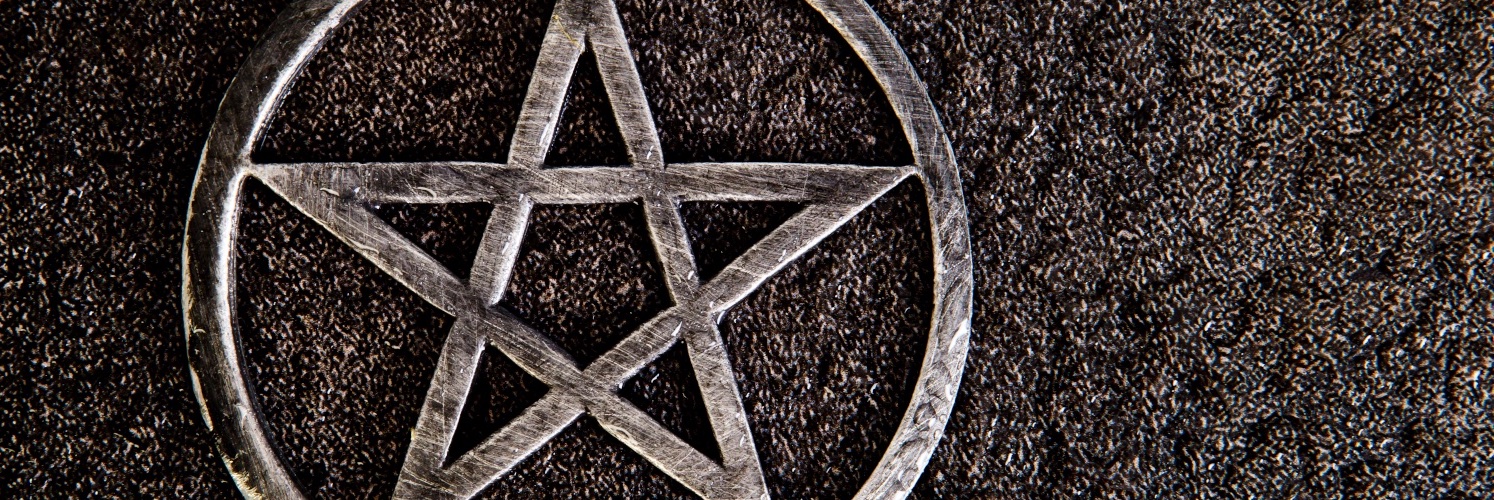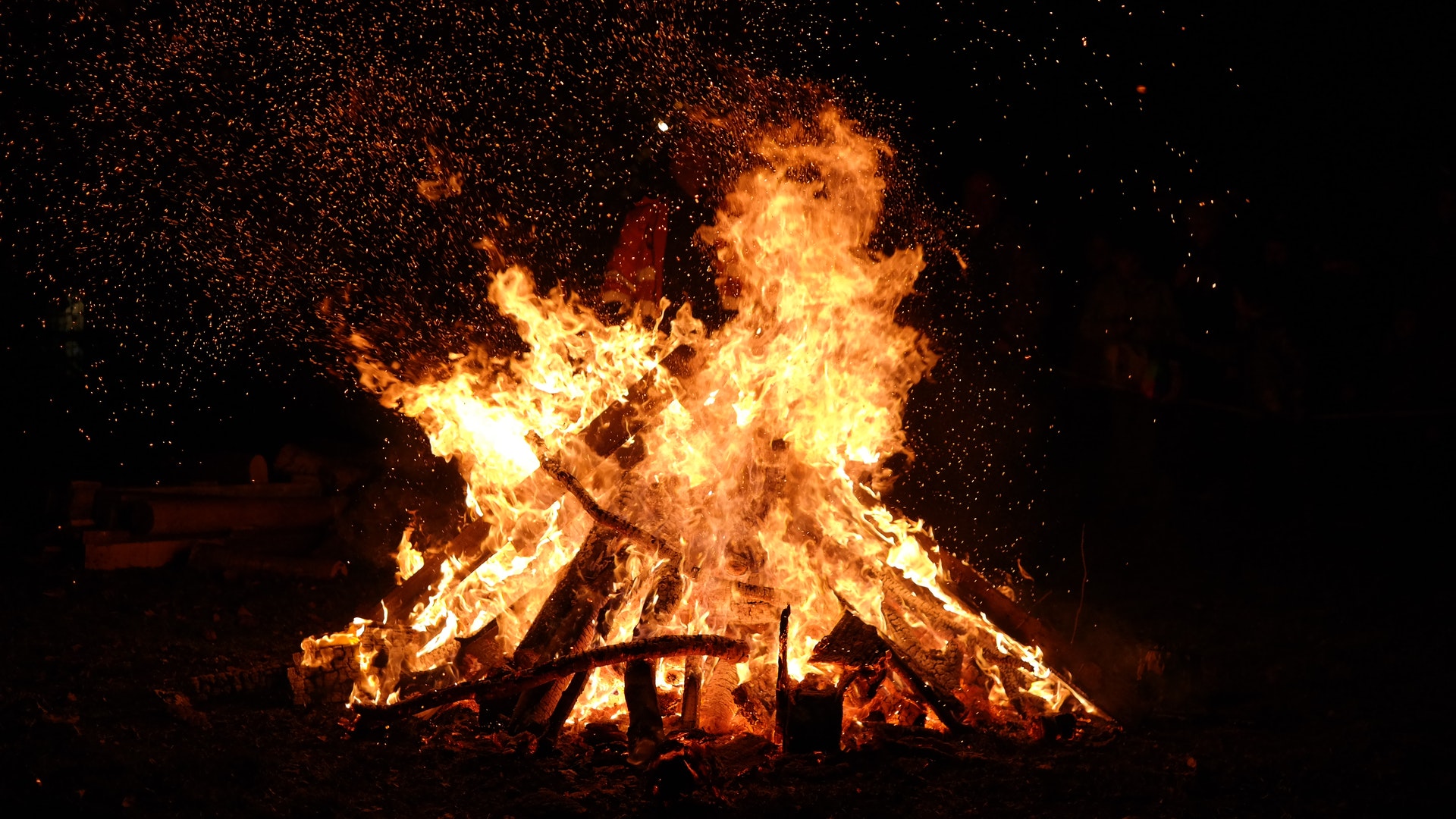n my tradition, we have two different types of fire represented in the Circle: Elemental Fire, which dwells in the South, and Sacred Fire, which dwells in the Center. Elemental Fire is meant to represent the transformative quality of the element. Sacred Fire, on the other hand, is a conjoining of all the Elements: Earth and Air for fuel, Water to regulate the intensity of the burning, Fire to create the first spark of life from which the Sacred Fire will grow, and Spirit in the hands of the people who built the fire for sacred purpose.
But there’s more to the Sacred Fire than simply being present in the Circle. It’s set in the Center of the Circle, the place of the Axis Mundi, which is the means by which we can travel to other realms. The Sacred Fire is a place where we can leave offerings so that their material substance is transformed and their spiritual essence passes to the spirit world. It’s a place where we can cast spells, sending the material substance that we’ve prepared into the flames to be activated by the Sacred Fire. It’s also a place where we can draw spiritual energy from in order to work powerful magick, manifest spirits, and enter trance states.
Cultures all across the world and throughout time have had a deep respect for fire as a sustainer and transformer of life, and for the most part we’ve forgotten that in the 21st Century Westernized world. Fire is as easy to create as flicking a lighter or striking a match. Most of the time, when we don’t have it, it’s an inconvenience rather than a life-threatening turn of events. Yet we’re still drawn to a campfire or bonfire, both for the warmth of the fire itself and for the fellowship of being among others.
In my tradition, we have a story that reminds us of how to prepare and light the sacred fire. We take care with the materials we use so that the fire is free from impurity. While the fire is burning, it is only used for sacred purposes. And when it comes time to put the fire out, we do so respectfully.
Building the Fire
We use the tipi method of creating the fire. We clean the fire pit and create a bed of tinder and twigs then take larger sticks and put them around the bed, leaving the tipi open in the South to invite the spirit of Elemental Fire in. We use only natural materials to light the fire — matches, flint and steel, fatwood, organic cotton soaked in beeswax, or occasionally a tealight stripped of its foil or plastic cup and set in the middle of the tinder and twigs.
In my tradition, the whole community helps in the process of building the Sacred Fire by cleaning the firepit, bringing kindling and split logs, and assisting the Firetender, who is the person charged with the responsibility of lighting, tending, and extinguishing the Sacred Fire during ritual.
Sacred Fire Bag
In my tradition, each initiate carries with them a pouch with the necessary tools to create a Sacred Fire. It is part of our ritual garb. Mine contains beeswax tapers, beeswax tea lights, sisal rope for kindling, flint and steel, charcloth, matches, cotton balls, Nine Woods Oil, and Sabbat Oil. It also contains a pocket bellows, basically a telescoping metal tube that you can aim at the coals and blow through to build up a fire, and a small boline. Sometimes I carry twigs of the Nine Woods to start the Sacred Fire with, and other times I carry a pouch of tobacco to offer to the spirits of the land.
Etiquette
We have some basic, common-sense expectations when it comes to our Sacred Fire. First of all, once the fire is lit, the only people who should be messing around with it is the Firetender. The exception here is when the Sacred Fire is part of a group experience like everyone putting desires or resolutions on a piece of paper and throwing it into the fire to transform and activate the spell, in which case the High Priestess will direct the participants to do so at a designated moment, or if the High Priestess has designated a specific person to put an offering of cakes and wine into the Sacred Fire close to the end of the ritual, in which case that person does so in such a way as to ensure that the offering is burnt.
Second, the Sacred Fire is not a trash fire. No food wrappers, cigarette butts, or random annoying bits of stuff are to go into the fire at any point in time. The Sacred Fire is used for sacred purposes only from the moment it is kindled to the moment it is fully extinguished.
Thirdly, the Firetender should keep a bucket (or two or three) of water outside the circle but within convenient grabbing range in case someone should catch their dress/shirt/cloak/hair on fire. A hose with the water already turned on and a sprayer attachment ready to be used is also acceptable. This water is a safety measure and should only be used for dousing people or a fire that is getting out of the Firetender’s control.
Extinguishing the Sacred Fire
Once the ritual is over, the Sacred Fire should be pulled apart and the coals dispersed evenly in the bottom of the fire pit. Partially burned logs should create a ring around the inside of the firepit, coals facing the sky. It is preferable for the firepit to be covered by a metal mesh spark screen to prevent an uncontrolled fire in the nearby area as the Sacred Fire burns itself out. If the practitioners will be leaving the area shortly after ritual, then it is appropriate to douse the fire with water. Otherwise, it is the Firetender’s responsibility to see to the safe extinguishing of the Sacred Fire.
If participants are remaining in the area, it’s important to make sure that the Sacred Fire does not become a party fire; that is, the etiquette should still be followed even if the ritual has concluded. Because people may linger to enjoy fellowship with others or gaze into the coals for divination, that sacred purpose should be honored by treating the fire in a respectful way. This discipline, even when drummers and dancers are present, is a wonderful way to show respect for the the magickal world we have the privilege to interact with.

